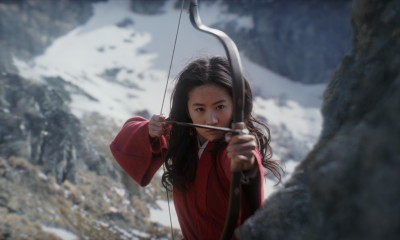100+ New Zealand cast and crew
200+ locals hired as background talent
7 weeks filming in Hokianga and Waitangi, Northland New Zealand
Open set so community members could see what is involved in making a movie
Whina tells the inspirational story of Dame Whina Cooper, New Zealand’s Te Whaea o Te Motu (The Mother of the Nation), her tumultuous life journey and unshakeable inner strength that led her to become one of Aotearoa New Zealand’s most remarkable leaders. Whina’s life’s purpose for racial equality and land rights culminated in leading a sacred hīkoi (march) over six hundred kilometres, from the top of New Zealand to the national parliament in Wellington, to unite Māori pride and Pākehā honour.
Set over most of Dame Whina Cooper’s long life Whina stars Rena Owen (Ngāpuhi) (Once Were Warriors) as the elderly Whina and Miriama McDowell (Ngāti Hine, Ngāpuhi) (Waru, The Dark Horse) as the younger Whina. Tioreore Ngātai-Melbourne portrays Whina as a teenager.
Made with full support of the Cooper whānau and Te Rarawa iwi leaders, the producers Matthew Metcalfe and Tainui Stephens (Te Rarawa) enlisted joint directing duo, James Napier Robertson, a renowned drama director, and Paula Whetu Jones (Te Aitanga a Mahaki, Whakatōhea, Ngāti Porou), a skilled director of both drama and documentary, to bring this important part of New Zealand history to life on the big screen.
Whina was made with funding from the New Zealand Film Commission, Ingenious Media, Traus Investments, and Images & Sound, Westmark Productions and the New Zealand Government’s Screen Production Grant and Screen Production Recovery Fund.
The New Zealand Film Commission supports high impact, authentic and culturally significant films. It helps facilitate dynamic pathways, and through screen production, bring economic benefits to the screen industry and local economies.
More than 100 cast and crew were employed on this production. Spending nearly seven weeks filming in and around the Hokianga and Waitangi areas. They stayed in local commerical accommodation and in privately rented homes, providing a much-needed boost to the sector during the pandemic.
As many were staying across the other side of the Hokianga harbour, the only way to get to Panguru was via the local Car Ferry which the production chartered to get people to/from work. Day to day supplies and services were sourced from local or surrounding area businesses.
Over 200 locals and people from the wider surrounding communities were hired as background talent including tamariki from te kura Taumata o Panguru - Panguru school. The principal of the kura was heavily involved in the organisation between production and the childrens whanau - many of the tamariki who ride their horses to school were also filmed in scenes riding their horses. Many locals were hired as additional labour to support various departments.
Basing location shooting in the Hokianga also allowed the filmmakers to directly involve Te Rarawa iwi and the Panguru community in the telling of the story.
“It was really special particularly to be able to involve the young people,” says Tainui Stephens, “for them to be able to see the story of one of their own brought to their town, and for it to be a storytelling world that they too could participate in. We had some young people working behind the scenes or as extras. We had an open set so that community members could see what was involved in the making of a film. We don't want filmmaking to be a mystery for our people.”
The strategy of participation was not a part of this one film alone. It’s part of a wider movement to nurture our filmmaker communities. “The desire of Māori to tell our own stories, with our own people, is increasing, while we steadily build capacity in the industry,” Stephens continues. For us to be able to film critical scenes back on the land where Whina came from, lived and died, to be able to spend time with the community, to film in the Church built by her father, brought not just authenticity but a wairua and an emotional core to what we were doing.”
A director intern Maruia Jensen was funded through the Film Commission, who also happened to come from Panguru.
The New Zealand Screen Production Grant
Whina utilised the New Zealand Screen production Grant. The New Zealand Screen Production Grant (NZSPG) for New Zealand Productions is part of the Government’s screen incentives scheme. Eligible productions can access a cash rebate equivalent to 40% of Qualifying New Zealand Production Expenditure (QNZPE).
This grant is capped at NZ$6 million per production unless the production qualifies for an Additional Grant, which is available to productions that can meet additional criteria and have QNZPE from NZ$15 million to NZ$50 million.
The purpose of the New Zealand Grant is twofold:
To build the sustainability, scale and critical mass of the domestic film industry and support the development of New Zealand creatives.
To provide cultural benefits to New Zealand by supporting the creation of New Zealand content and stories.
The New Zealand Film Commission administers the NZSPG for New Zealand Productions on behalf of the Ministry for Culture and Heritage.
A NZSPG for International Productions is also available and includes a Post, Digital and Visual Effects Grant. Click here for more information.
Synopsis
A biopic of the trailblazing Māori leader, Dame Whina Cooper, whose extraordinary life saw her break gender boundaries, champion the rights of Māori, and fight for the land - all the while staying true to her heart and her beliefs.
He kiriata haurongo mō te wahine rangatira mō Whina Cooper. Koia te tātāriki koia te kaiarataki i ōna iwi, i tōna anō wā. Nāna te huarahi i para kia whai mana a Māori mā, a wāhine mā. Nāna ngā iwi i ara ake mō te whenua te take. Nōna te ngākau aroha.
Whina is in NZ cinemas June 23 2022


















































